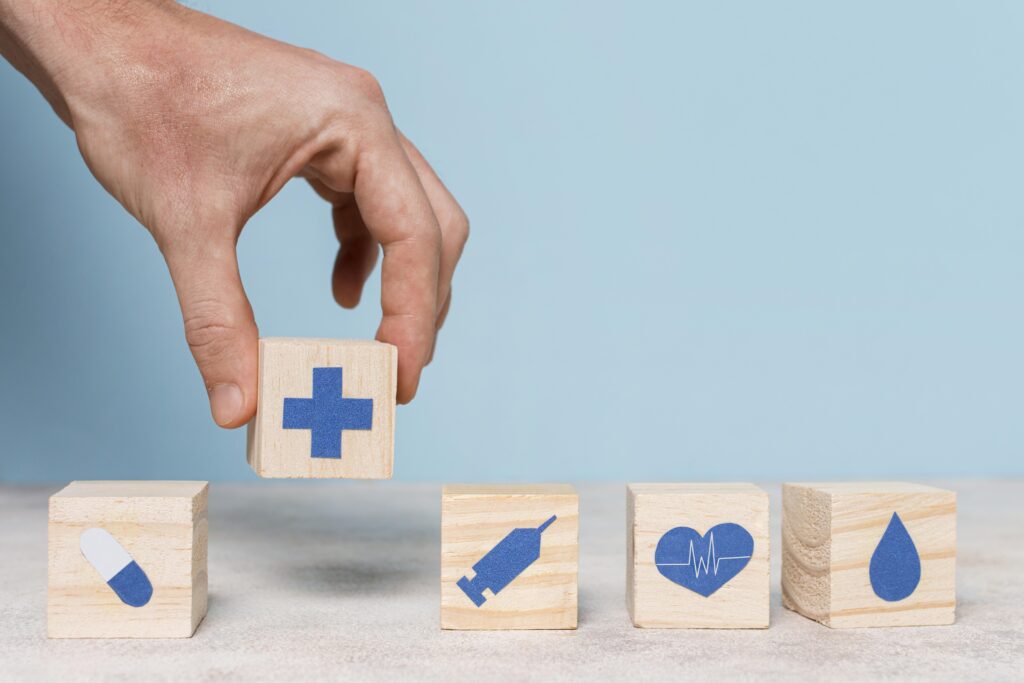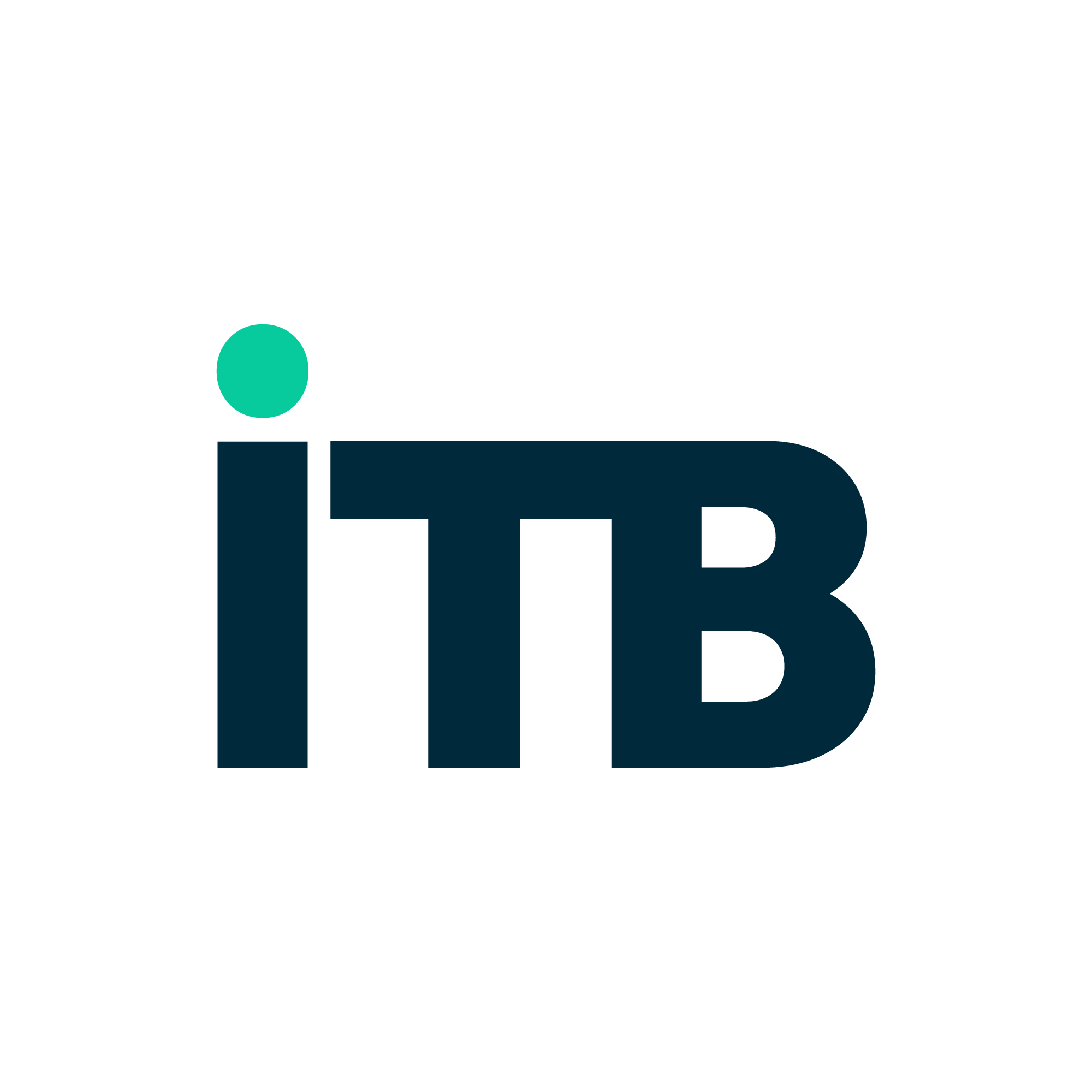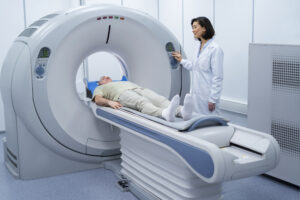The healthcare industry is no stranger to innovation. Over the past few decades, technology has helped extend lives, improve diagnoses, and create entirely new treatment options. But today, we’re witnessing a new wave of digital transformation — one where AI, Blockchain, and other emerging technologies are fundamentally reshaping healthcare’s future.
From predictive analytics to secure data sharing, these technologies are solving some of the biggest challenges in medicine, patient care, and health administration. Let’s explore how AI, blockchain, and other tech innovations are driving healthcare forward.

AI: Smarter Diagnosis, Personalized Care
Artificial Intelligence (AI) is quickly becoming the brainpower behind modern healthcare.
Early Detection and Diagnosis: AI algorithms can scan thousands of medical images in seconds, spotting signs of diseases like cancer, pneumonia, and neurological disorders—sometimes even before human doctors can.
Predictive Healthcare: Machine learning models analyze patient data to predict potential health issues like heart attacks, diabetes complications, or readmission risks, allowing for early intervention.
Personalized Treatment Plans: AI tailors treatments based on a patient’s genetics, lifestyle, and medical history, creating care plans that are more effective and less prone to side effects.
By making healthcare more predictive, precise, and personalized, AI is setting a new gold standard for patient outcomes.
Blockchain: Securing Healthcare Data
In a world where medical data breaches are on the rise, blockchain offers a secure, transparent, and tamper-proof solution.
Secure Medical Records: Blockchain can create decentralized records that patients control, ensuring that sensitive data isn’t altered, lost, or misused.
Data Interoperability: Different hospitals, clinics, and insurers often struggle to share patient data securely. Blockchain enables seamless, secure information exchange without compromising privacy.
Pharmaceutical Supply Chain Integrity: Blockchain helps track medications from manufacturer to patient, reducing the risk of counterfeit drugs entering the system.
At its core, blockchain restores trust and security to healthcare’s data-driven future.
Telemedicine and Remote Monitoring: Healthcare Without Borders
The pandemic accelerated the adoption of telemedicine, but it’s clear that virtual care is here to stay.
Virtual Consultations: Patients can now see their doctors without leaving home, making healthcare more accessible—especially in rural or underserved areas.
Wearable Health Devices: Smartwatches, glucose monitors, and connected blood pressure cuffs allow continuous monitoring, sending real-time data to healthcare providers.
Remote Chronic Disease Management: Conditions like hypertension, diabetes, and asthma can now be monitored remotely, reducing hospital visits and improving long-term outcomes.
Telemedicine turns healthcare into a 24/7, everywhere service, not just something you access during office hours.
Internet of Medical Things (IoMT): The Connected Hospital
The Internet of Medical Things (IoMT) — the network of connected healthcare devices — is transforming how hospitals operate.
Smart Beds: Automatically adjust to patient movements, preventing bedsores and improving comfort.
Asset Tracking: Hospitals use IoT devices to track equipment like wheelchairs, IV pumps, and portable imaging machines in real-time, reducing losses and improving efficiency.
Real-Time Patient Monitoring: Connected devices continuously monitor vitals and alert staff to changes, enabling faster, more responsive care.
With IoMT, healthcare facilities become smarter, safer, and more efficient.
Robotics: Precision and Efficiency in Care
Robotics has expanded from factory floors into hospital wards and surgical suites.
Robotic Surgery: Surgical robots offer ultra-precise movements, resulting in smaller incisions, less blood loss, and faster recovery times for patients.
Rehabilitation Robots: Assist patients in regaining movement after injuries or strokes, providing consistent, measurable therapy sessions.
Logistics Robots: Some hospitals deploy robots to transport medication, linens, or even disinfect rooms, freeing up staff for more critical tasks.
By blending machine precision with human expertise, robotics is raising the bar for healthcare quality.
Big Data and Predictive Analytics: Smarter Healthcare Decisions
Healthcare generates an overwhelming amount of data — but Big Data analytics makes sense of it.
Population Health Management: Analyzing data from thousands (or millions) of patients helps identify health trends, predict disease outbreaks, and optimize resource allocation.
Clinical Decision Support: AI-driven analytics tools suggest diagnoses, recommend treatments, and flag potential complications based on real-time data.
Operational Optimization: Hospitals can forecast patient admissions, manage staffing more efficiently, and optimize supply chains with predictive insights.
In short, Big Data turns overwhelming information into actionable intelligence.
Challenges to Navigate
Of course, this rapid innovation brings challenges:
Data Privacy and Security: Protecting sensitive patient information is more important—and more difficult—than ever.
Regulatory Hurdles: New technologies often outpace existing healthcare regulations, requiring constant updates to policies.
Technology Access and Equity: Ensuring that HealthTech benefits everyone, not just a privileged few, will be key.
Organizations that tackle these issues thoughtfully will lead healthcare’s next evolution.
From AI’s smart diagnostics to blockchain’s secure record-keeping, from telemedicine to robotic surgery, technology is no longer just supporting healthcare—it’s redefining it.
The future of healthcare will be smarter, faster, more personalized, and more secure — and the innovations happening today are building the foundation.
The next chapter of medicine won’t be written by technology alone, but by how well we combine human expertise with digital intelligence to deliver better care for all.




